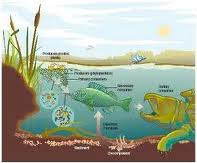Attention to environmental issues has increased since the 1980s bringing such vital issues to the attention of officials and the public at large. The government is aware that the conservation of the environment is not an issue of the day but rather of the future and long-term nature, that affects the resources of future generations.
The official attention to the environment has been reflected in the establishment of the Environmental Protection Council (EPC). The EPC is a supervisory and coordinating body entrusted with designing environmental policies, legislation, environmental standards, following up changes on environmental conditions, proposition of remedies to environmental problems and training and strengthening public awareness. The Environmental Protection Law of 1995 has asserted such mandate further stipulating the additional responsibility of EPC in terms of environmental surveying, monitoring and follow-up of the implementation of environmental legislation.
The official attention to the environment has been complemented with a popular response. Several NGOs were established like the Yemeni Society for the Conservation of the Environment, the Pro-environment AL Nahl Association for Environment Conservation, the Association for the Protection of Archaeology and Coastlines and the Association for the Protection of Birds. In addition, there is increasing environment attention by researchers and academics and the establishment of friends of the environment groups, which exist in several schools.







